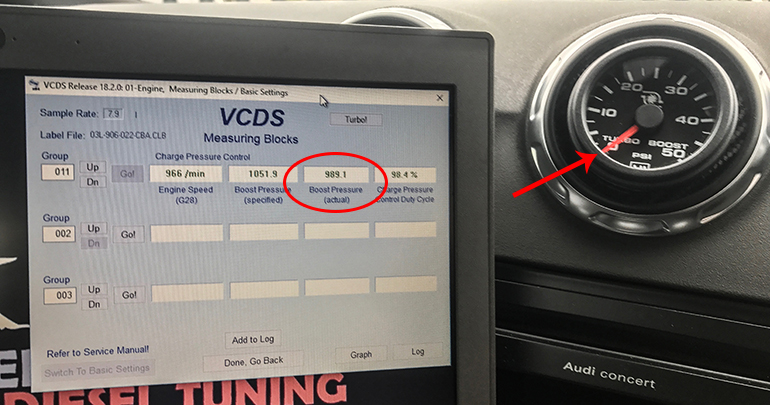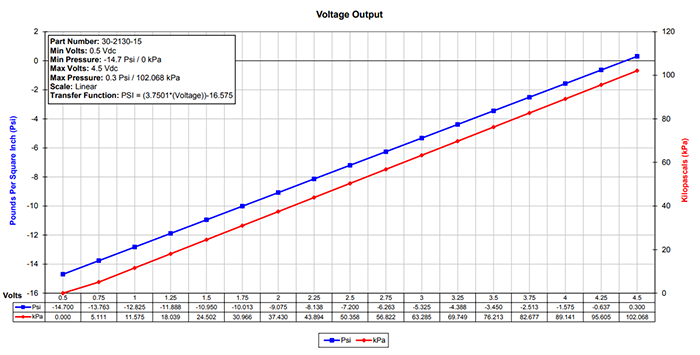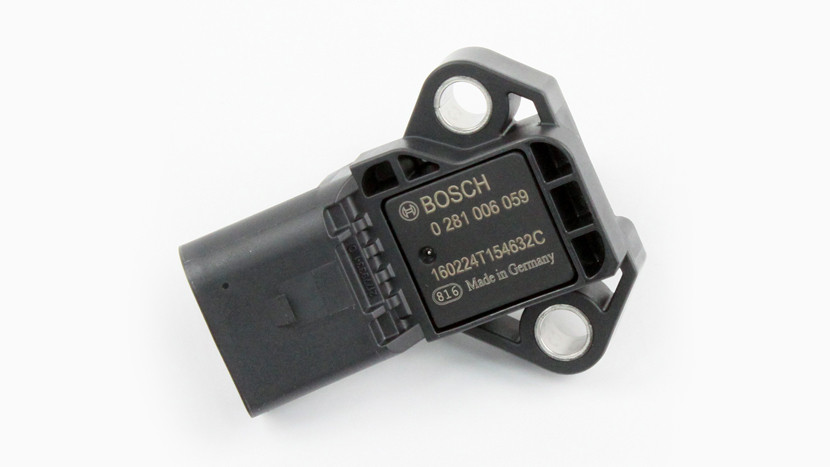MAP Sensors
The MAP Sensor is one of many critical sensors the Engine Control Unit (ECU) uses to help run the engine effectively and safely. The MAP Sensor itself is talked about a lot in the aftermarket tuning scene, because it is one of the most common sensors which needs changing when modifying a vehicle. We receive up to 30 phone calls per month regarding these relatively simple sensors - hopefully this article will tell you everything you need to know!
The MAP Sensor measures Manifold Absolute Pressure. Absolute Pressure is the actual pressure value inclusive of the Ambient Pressure, rather than Gauge Pressure, which is pressure above Ambient. Ambient pressure at sea level is about 1 Bar, so your MAP Sensor when the turbo is producing no boost reads roughly 1 Bar.
This itself can create some confusion - Boost Pressure is usually referred to using Gauge Pressure, and therefore doesn’t include the ambient pressure. This means that to get Boost Pressure from MAP, you have to subtract the ambient pressure. At sea level this is about 1 Bar, so 2.5 Bar MAP is approx 1.5 Bar Boost.
Quick Maths: BOOST PRESSURE = MAP - AMBIENT PRESSURE
Despite the fact it is called Manifold Absolute Pressure, the MAP sensor in TDIs is rarely located in the manifold itself, and is usually located somewhere on the boost piping after the intercooler. It is important it is located post intercooler as in TDIs the MAP sensor also measures the Intake Air Temperature.
So why would we need to change this sensor? The main reason is to run a higher boost level than the current sensor is capable of measuring. TDIs come with 3 different ratings of MAP sensor. 2.5 Bar, 3 Bar and 4 Bar. Remember that is MAP, not Boost Pressure - therefore the max boost level that can be measured by each sensor is actually 1 Bar less than the sensor rating - so a 3 Bar sensor for instance can measure up to 3 Bar MAP, or approx 2 Bar of boost.
It is important to make sure there is a little ‘headroom’ above the boost level you intend to run. A car running more than 1.8 Bar of boost really wants a 4 Bar MAP sensor, not a 3 Bar - this is because it is impossible for the ECU to control boost correctly if the sensor is often being maxed out. Boost spikes above the set point of up to 0.2 Bar are common and it is important the ECU can see these spikes and control them correctly, and go into limp mode if the turbo is overboosting to protect the engine. With the wrong MAP sensor none of this will work correctly.
Despite being clearly listed on our website, one of the most common mistakes people make is fitting a new higher rated MAP sensor without calibrating it in the ECU. Generally this causes poor performance and limp mode, and customers often complain of a faulty MAP sensor despite the fact it just hasn’t been calibrated correctly, or at all.
Most ECU sensors work in the same way - the ECU outputs a 5 Volt signal to the sensor, and the sensor returns a voltage between 0 and 5 Volts. Depending on the return voltage, the ECU calculates what the reading is. Each sensor therefore needs to be Calibrated - it needs to be programmed into the ECU what the pressure reading is at a low point around 0 Volts, and at a high point around 5 Volts.
For a 3 bar sensor, the values are approximately 0.2 Bar at 0.5 Volts and 3 Bar at 4.5 Volts. If you remove this 3 Bar sensor and fit a 4 Bar, the new values are approx. 0.5 Bar at 0.5 Volts and 4 Bar at 4.5 Volts, but the ECU doesn’t know this unless you program it! This means that all the MAP readings will be wrong - it’s easy to see this if you plug Vag-Com in and look at MAP. This can be fixed by inputting the new values into the ECU - any competent tuner should be able to do this easily, if they can't, we suggest going elsewhere.
Without an accurate MAP sensor reading, it is impossible for the ECU to control the engine properly. Always use a good quality MAP sensor with the correct rating for your project, and remember it needs fitting during tuning by a reputable tuner - we can advise which sensors are appropriate, whether you need a standard VAG 3 or 4 Bar, or even a 6 Bar sensor like we use in our Arosa Drag Car!
Recent Posts
-
Wheel Spacers - What to know
Wheel Spacers Wheel spacers are unquestionably one of the simplest and cheapest modifications to enh …06 03 2025 -
Donington GP - Roadsports & ClubEnduro - 750MC - 12th & 13th October 2024
With just over a month since our fantastic 1-2 finish at Oulton Park, it was another RoadSports and …01 11 2024 -
Oulton Park - ClubEnduro - 750MC - 21st September 2024
After a great result at Silverstone, we had a 5 week break before we out again, this time for a 100 …07 10 2024




